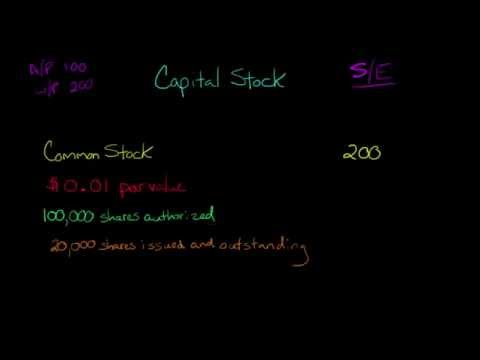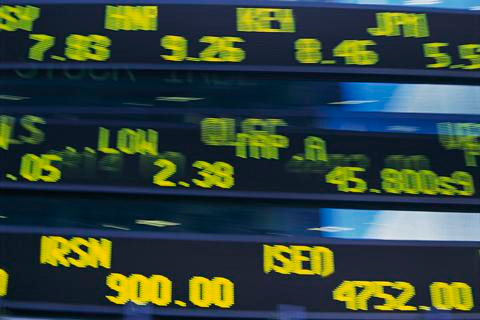Contents:


In bond markets, the forward rate refers to the effective yield on a bond, commonly U.S. Treasury bills, and is calculated based on the relationship between interest rates and maturities. The current spot rate may be higher, so the buyer will pay more today than tomorrow. In case both the options generate the same return on investment, then Jack will be indifferent and go with either of the two options. But what if the interest offered is higher for a six-month bond than the one-year bond. In that case, he will make more money by buying the six-month bond now and rolling it over for another six months.
Uncovered Interest Rate Parity (UIP): Definition and Calculation – Investopedia
Uncovered Interest Rate Parity (UIP): Definition and Calculation.
Posted: Sun, 26 Mar 2017 05:23:12 GMT [source]
During the time you held the bond, you also received interest payments. The spot rate reflects real-time market supply and demand for an asset available for immediate delivery. Typically, the calculation of SR depends on various factors, such as the asset’s market value in the market right now and shortly. The movement in an asset’s SR indicates its demand and supply in the market. As such, the spot rate of an asset varies frequently, and at times, it may also witness drastic change owing to some significant event or news about it.
Calculating the Yield-to-maturity of a Bond using Spot Rates
The Treasury yield is the interest rate that the U.S. government pays to borrow money for different lengths of time. Adam Hayes, Ph.D., CFA, is a financial writer with 15+ years Wall Street experience as a derivatives trader. Besides his extensive derivative trading expertise, Adam is an expert in economics and behavioral finance. Adam received his master’s in economics from The New School for Social Research and his Ph.D. from the University of Wisconsin-Madison in sociology. He is a CFA charterholder as well as holding FINRA Series 7, 55 & 63 licenses.
An Introduction to the International Fisher Effect – Investopedia
An Introduction to the International Fisher Effect.
Posted: Sat, 25 Mar 2017 07:53:21 GMT [source]
Thus, the forward market rate is for future delivery after the usual settlement time in the cash market. In theory, forward rates are prices of financial transactions that are expected to take place at some future point. Thus, bonds trading at below par value, or discount bonds, have a yield to maturity that is higher than the actual coupon rate. Bonds trading above par value, or premium bonds, have a yield to maturity lower than the coupon rate.
Some currencies, especially in developing economies, are controlled by governments that set the spot exchange rate. For instance, the central government of China has a currency peg policy that sets the yuan and keeps it within a tight trading range against the U.S. dollar. Currency traders follow spot rates to identify trading opportunities not only in the spot market but also in futures, forwards, and options markets.
Calculating the Price of a Bond using Spot Rates
In addition, it is used as a benchmark for pricing other currency-related products and services. The spot rate is the price quoted for immediate settlement on an interest rate, commodity, a security, or a currency. The spot rate, also referred to as the “spot price,” is the current market value of an asset available for immediate delivery at the moment of the quote.

The outright spot exchange rate is the current market price for an immediate foreign exchange transaction. It represents the exchange rate at which one currency can be exchanged for another at a specified time. It values financial instruments such as forwards, futures, and options.
Spot Rate: What It Is, How It Works, Example
The restaurant and the farmer agree to the delivery of 100 cases of iceberg lettuce on July 1st at a forward rate of $55 per case. On July 1st, even if the price per case has decreased to $45/case or increased to $65/case, the contract will proceed at $55/case. A forward rate indicates the interest rate on a loan beginning at some time in the future, whereas a spot rate is the interest rate on a loan beginning immediately.
A financial instrument with a spot rate of 2.5% is the agreed-upon market price of the transaction based on current buyer and seller action. The spot exchange rate represents the present value of one currency compared to another, reflecting the cost of exchanging one for the other at the current market conditions. The spot exchange rate is very important as it determines the value of cross-border transactions, such as international trade and investment.
This type of transaction is most commonly executed through futures and traditional contracts that reference the spot rate at the time of signing. Spot settlement (i.e., the transfer of funds that completes a spot contract transaction) normally occurs one or two business days from the trade date, also called the horizon. Regardless of what happens in the markets between the date the transaction is initiated and the date it settles, the transaction will be completed at the agreed-upon spot rate. Suppose a US-based company wants to purchase goods from a Japanese supplier that requires Japanese yen payment. On January 1, the spot exchange rate between the US dollar and the Japanese yen was 105 JPY to 1 USD.
The forward margin reflects the difference between the spot rate formula rate and the forward rate for a certain commodity or currency. The spot price is the price at which an asset can be bought or sold for immediate delivery of that asset. Contracts for delivery will often reference the spot rate at the time of signing.
However, if demands vary in the future, price changes; hence, a buyer who has a bullish view may face losses based on spot rate purchases. However, this can be hedged by any derivative product with a future rate of interest as one of its components. Calculate The Spot RateSpot Rate’ is the cash rate at which an immediate transaction and/or settlement takes place between the buyer and seller parties.
He has 8 years experience in finance, from financial planning and wealth management to corporate finance and FP&A. An interpolated yield curve or “I curve” refers to a yield curve created using data on the yield and maturities of on-the-run Treasuries. Suppose a hypothetical two-year bond is yielding 10%, while a one-year bond is yielding 8%. A forward interest rate acts as a discount rate for a single payment from one future date and discounts it to a closer future date.
Converting From Spot to Forward Rate
He currently researches and teaches economic sociology and the social studies of finance at the Hebrew University in Jerusalem. Fair value can refer to the agreed price between buyer and seller or the estimated worth of assets and liabilities. To see the relationship again, suppose the spot rate for a three-year and four-year bond is 7% and 6%, respectively. A forward rate between years three and four—the equivalent rate required if the three-year bond is rolled over into a one-year bond after it matures—would be 3.06%. Theoretically, the forward rate should be equal to the spot rate plus any earnings from the security . Investors do not opt for cash benefits as they are reinvesting their profits in their portfolio.
The four corresponding cash flows are $5 (calculated as 10% / 2 x $100), $5, $5, $105 . When we plot the spot rates against the maturities, we get the spot rate or the zero curve. A “spot” interest rate tells you what the price of a financial contract is on the spot date, which is normally within two days after a trade.
The euro is used in many continental European countries including Germany, France, and Italy. A forward contract is a customized contract between two parties to buy or sell an asset at a specified price on a future date. Divide the result obtained in step 3 by the difference in the number of periods between the two bonds, then subtract 1 from the result. In this example, 1.0851% is divided by 1 (2 years – 1 year), and 1 is subtracted. Buyers and sellers use forward rates to hedge risk or explore potential price fluctuations of goods in the future. Buyers and sellers use the spot rate when there is a high need to execute a contract quickly in order to receive/relinquish goods.
Besides the interest rate, maturity time is another component of its calculation. On the transaction date, the two parties involved in the transaction agree on the amount of currency A that will be exchanged for currency B. Finally, the parties also agree on the value of the transaction in both currencies and the settlement date. If the currencies are to be delivered, the parties also exchange bank information.
Spot Interest Rate vs Yield to Maturity
The cost of a commodity in bond markets is determined by its expected yield over a given time. If a trader purchases a bond that is closer to maturity, the bond’s forward rate will be greater than the interest rate. The spot exchange rate is influenced by the foreign exchange market and government entities.
The YTM is the annual rate of return calculated as if the investor will hold the asset until maturity. The difference between spot prices and futures contract prices can be significant. Futures prices can be in contango or backwardation.Contangois when futures prices fall to meet the lower spot price. Backwardationis when futures prices rise to meet the higher spot price.
EUR To AUD: Convert Euro to Australian Dollar – Forbes
EUR To AUD: Convert Euro to Australian Dollar.
Posted: Wed, 10 Aug 2022 14:39:48 GMT [source]
Suppose a US-based company had previously agreed to purchase goods from a UK supplier on January 15. The company would now need to pay more USDs to purchase the same amount of GBP, as the exchange rate has changed. This is an example of how rapidly changing market conditions can impact businesses engaged in international trade. The spot exchange rate is the current market price for exchanging one currency for another. Foreign exchange of a domestic currency with a foreign currency allows traders to easily transact a good or service in standard currency. The spot exchange rate is the cost incurred when a product is traded immediately on the spot.

If the investor wants to sell the bond on the secondary market, the spot rate is the crucial number. For example, suppose that a two-year 10% coupon bond with a par value of $100 is being priced using Treasury spot rates. The Treasury spot rates for the subsequent four periods are 8%, 8.05%, 8.1%, and 8.12%.
Bonds may be priced based on Treasury spot rates rather than Treasury yields to reflect market expectations of changing interest rates. When spot rates are derived and plotted on a graph, the resulting curve is the spot rate Treasury curve. As a result, market participants closely monitor the economic and political developments that affect these currencies and adjust their trading strategies accordingly. It also allows market participants to transact in the foreign exchange market without a long-term commitment. This provides greater flexibility and reduces the risk of currency fluctuations.
- Inter-dealer voice broker execution is done via telephone conversation with a foreign exchange broker.
- A spot trade is the purchase or sale of a foreign currency or commodity for immediate delivery.
- The spot rate from a foreign exchange perspective is also called the “benchmark rate,” “straightforward rate” or “outright rate.”
- Currency investors use spot exchange rates to identify an investment opportunity.
Now, on the day of the transaction, the commodities will be sold and purchased at the strike price, irrespective of the spot price on that date. The market situation is known as contango if the contract’s strike price is higher than the expected spot price. At the same time, the opposite market situation is known as backwardation. The term “spot rate” refers to the current market value of a security, commodity, or currency available for purchase/ sale transaction in an immediate settlement.
